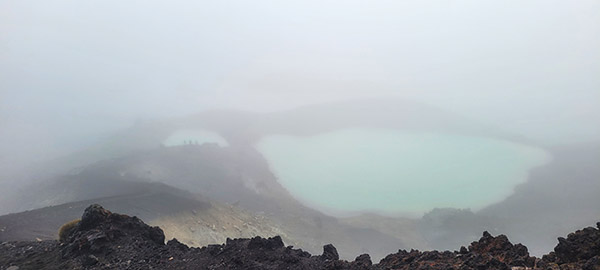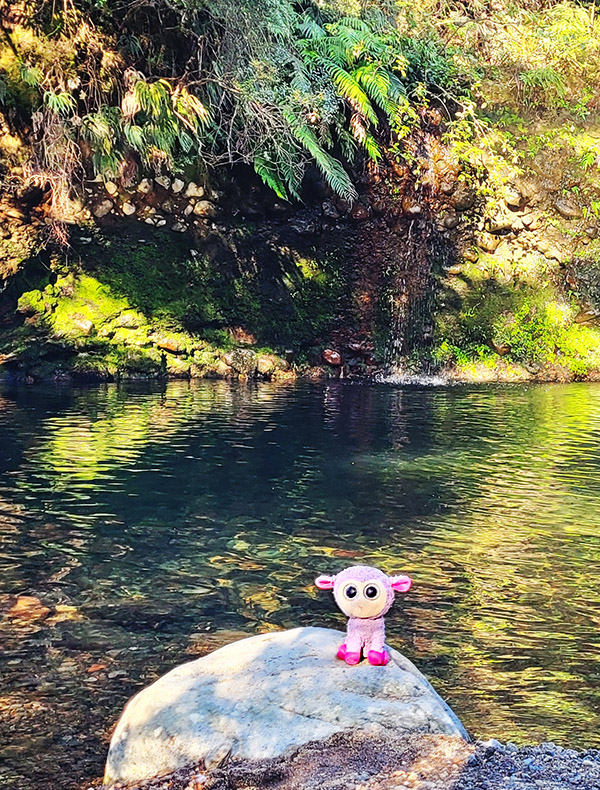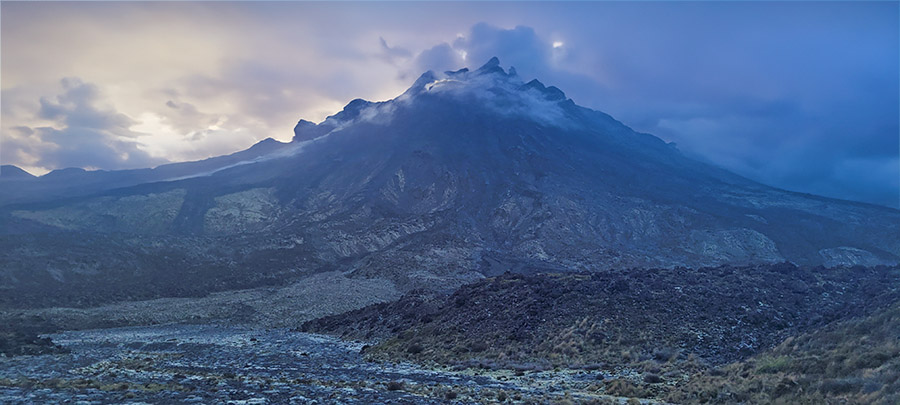By Mike Huber
The Tongariro Crossing in New Zealand is touted as one of the world’s best day hikes. This obviously meant it was a hike I had to tackle. The crossing is 19.4 kilometers (11.64 miles) across an active volcano, and it includes a LOT of stairs, both up and down. Having not been hiking in several months, this was the first time I was actually questioning my physical ability. I don’t think it comes from age as much as hard landings from falling out of airplanes. Either way, it’s the Number 1 hike on Earth so it really needed to be checked off my list.
 As with all mountains, the weather is constantly changing and this mountain would prove no different. The previous day the hikes were cancelled due to heavy winds. Upon waking up at 0400 it was a relief to learn that the shuttles would be running that day. My campsite was just outside the town of National Park and was right along the shuttle path for a 0545 pickup and a 30-minute drive to the trailhead.
As with all mountains, the weather is constantly changing and this mountain would prove no different. The previous day the hikes were cancelled due to heavy winds. Upon waking up at 0400 it was a relief to learn that the shuttles would be running that day. My campsite was just outside the town of National Park and was right along the shuttle path for a 0545 pickup and a 30-minute drive to the trailhead.
The hike started with misty clouds which added to the already stunning mountain scenery, and the winds, well they were blowing hard. I had purposely loaded my day pack heavy with extra everything in the event I’d need it. That was smart. By day’s end I had used almost everything I brought. This was comforting since I thought I had over packed.
The first five kilometers weren’t bad except for the brutal winds, which were a constant battle. It got to the point that when the winds subsided I’d almost fall down due to leaning in so much. Once that five kilometers were wrapping up, there were several posted signs that said “If you aren’t feeling well, now is a great time to turn back, there is no shame in that.” I used those signs as motivation to continue.


Once reaching the summit, it was obvious the crown jewel of the hike would not be shining as brightly as it had been in the photos. There were two bright neon emerald green lakes that in the sun just glowed; however, with the weather having turned so quickly it was nothing more than a dull blue barely visible through the cloud bank. The winds were still howling from every direction. There was hardly even time to snap a few photos before I decided it was time to descend into the next crater for some shelter and to take a break and eat a snack. The only portion that remained was the never-ending descent filled with many more steps.
Overall, it was a magnificent day with great views and conversation with fellow hikers from all over the world. My finish time, not that it matters, was just over 6 hours. This seemed admirable as the estimated time for most was between 6 and 8 hours. The remainder of the day was spent at my campsite swimming in my own personal grotto behind my tent, talking with others that hiked it (or would in the morning), consuming ibuprofen, and feeling semi accomplished now that this hike was now completed.

Read the Mike Huber New Zealand posts here:
Never miss an ExNotes blog:



Mike,
That sounds like a very cool hike and explains a lot about what I observed at the Tongariro River! Some years ago we flew to Auckland and rented a Class C motorhome (the New Zealanders call them “gypsy vans”). The purpose was to tour the North Island for a couple of weeks’ fly fishing and sightseeing. We found a comfortable camp spot at Tongariro Lodge, along the banks of the Tongariro River just a few miles south of Lake Taupo. The fly fishing was INCREDIBLE, I caught (and released) many huge trout in the 8- to 15- pound range. Story goes that there were no native or wild trout in New Zealand prior to the late 1890’s when somebody transplanted a bunch of steelhead eggs or fry from the Pacific NW of the USA. The trout think Lake Taupo is the sea and they run up the Tongariro as if it was the Umpqua in Oregon!
But anyhow, I noticed a lot of debris floating down the river as I fished. Upon further examination, the debris was floating rocks! Large and small pieces of white to light grey colored pumice to be precise. Of course, I knew there was some volcanic source area, and now it all makes sense to me after reading about your hike! The pumice was probably coming from the Mt. Tongariro stratovolcano, or more likely the active Ngauruhoe crater.
Did you happen to walk across a lot of pumice rock on the trail?
Great article, thanks for stirring up some grand memories of the North Island!
Cheers
Joe C
thats really cool you saw that. yes, a lot of lava rocks and even some steam emitting on the far side of the hike. Thats really cool this article sparked those memories. Seriously. that made my week. awesome!